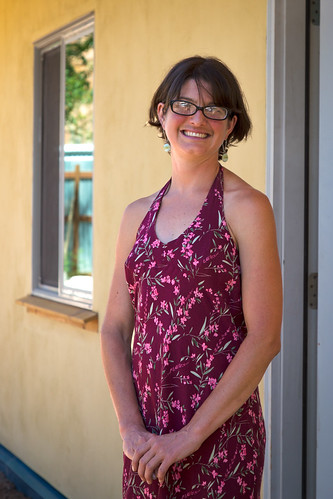
Though National Homeownership Month has ended, the stories of people in rural America achieving that American dream never do. Last month I had the good fortune to visit the homes of two such people in Moab, Utah: Heather Gallagher and Lynn Chenard.
Both women live and work in the town of Moab, Utah, adjacent to Arches National Park. They were drawn there by many of the same things that call to me: rock climbing, mountain biking, river rafting, and wilderness exploration. The one thing that might have forced them out, however, is the community’s lack of affordable housing and limited seasonal work.
Lynn said, “I think a lot of people here work really hard but during the end of tourist season we get laid off regardless of how hard we worked during the year.” Both Lynn and Heather have worked tourism jobs since they moved to Moab and both struggled to find housing they could put equity into.
Fortunately a program exists to help. Nonprofit Community Rebuilds constructs modest, energy efficient straw bale homes that replace old trailers left over from Moab's uranium mining days. To keep costs low, they bring in teams of interns to build the homes and learn natural building in the process.
“It’s a win-win-win-win-win situation for a lot of people,” says Lynn. The interns earn college credit, dilapidated trailers are removed, and best of all someone gets a new home.
Though I’ve always been interested in natural building, sometimes it takes an expert to convince naysayers that a straw bale home is worth the mud it’s stacked with. Bruce King is a structural engineer and does research on natural building. He says the straw bale model, started 120 years ago in Nebraska, just makes sense. “It’s the best insulation you can get and you don’t have to buy (foreign) oil to make your insulation. You can buy it from the farmer next door. Farmers are growing more than food and they don’t even know it.”
The Community Rebuilds method works because of a few moving parts. Applicants get a loan through USDA Rural Development and work with the nonprofit and interns to complete their homes. It’s a version of the Mutual Self-Help Housing Program unique to Community Rebuilds and championed by the desire of each organization to make affordable housing possible. In addition to interns working the build site, the homeowners themselves put in a percentage of the work and learn about building along the way. “I’ve learned tons!” says Heather, “I’ve learned how to work tools, I’ve learned how to plaster…I just can’t imagine a better program out there.”
I couldn’t agree more. Our partnership has made our goal of improving the lives of rural Americans achievable. It’s evident when new homeowners like Heather say she’s confident in her home. “I feel like I’m one of the luckiest people,” Heather said. “I have a house that’s built with love from all the interns that I got to custom design and it’s affordable.”

